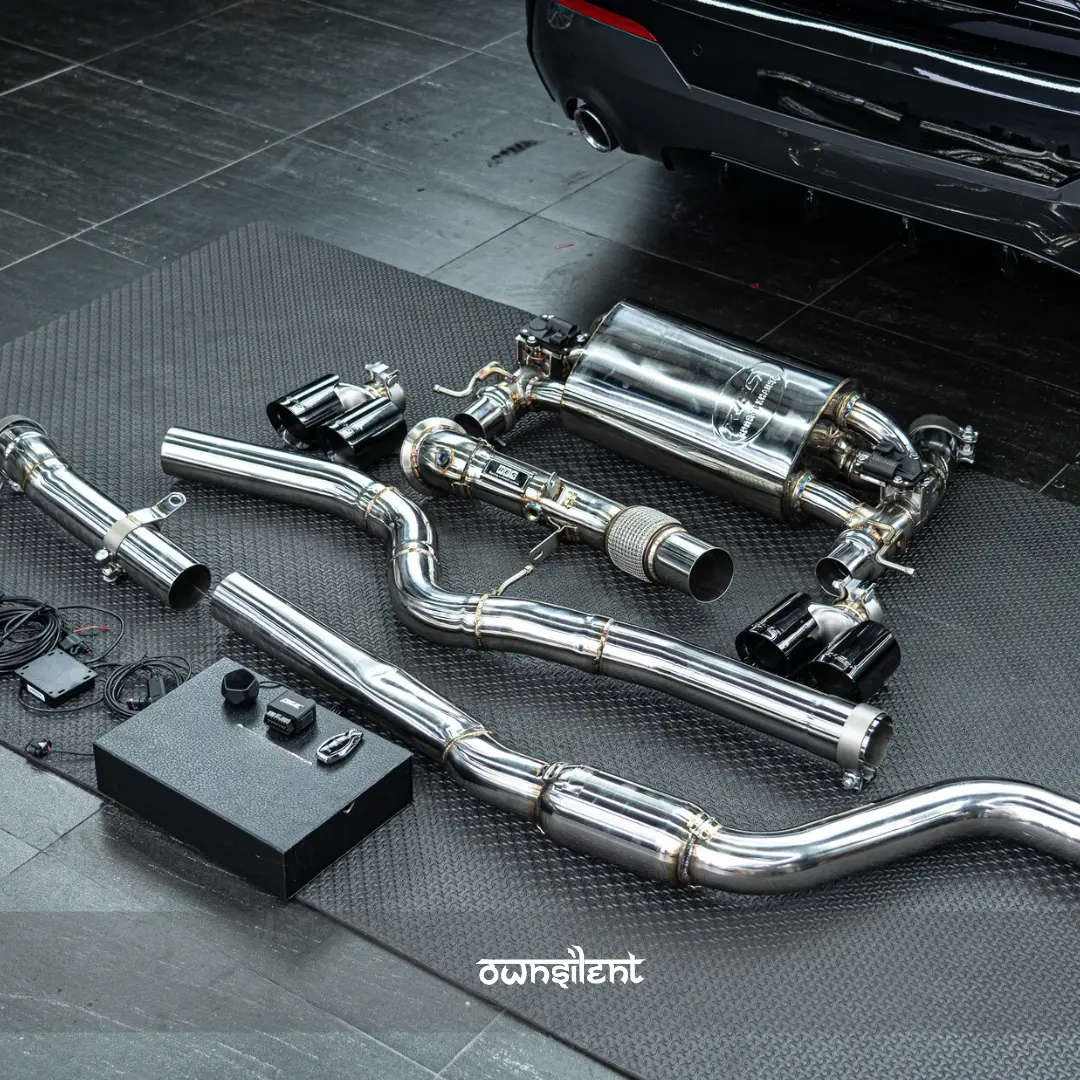Exhaust System
An Exhaust System is a critical component of an internal combustion engine, designed to channel exhaust gases from the engine to the outside of the vehicle while reducing emissions, noise, and heat. It also enhances engine performance and fuel efficiency when properly designed.

Your Dynamic Snippet will be displayed here... This message is displayed because you did not provided both a filter and a template to use.
An Exhaust System is a critical component of an internal combustion engine, designed to channel exhaust gases from the engine to the outside of the vehicle while reducing emissions, noise, and heat. It also enhances engine performance and fuel efficiency when properly designed.
Components of an Exhaust System
-
Exhaust Manifold/Headers:
- Collects exhaust gases from the engine cylinders and directs them into the exhaust pipe.
- Performance headers are designed to improve airflow and reduce backpressure.
-
Catalytic Converter:
- Converts harmful pollutants (e.g., carbon monoxide, nitrogen oxides, hydrocarbons) into less harmful gases like carbon dioxide and water vapor.
-
Resonator:
- Works with the muffler to fine-tune the exhaust note and reduce certain frequencies of noise.
-
Muffler:
- Reduces engine noise by using baffles or sound-dampening materials.
-
Exhaust Pipes:
- Connects all components and directs gases out of the vehicle.
- Often made of stainless steel, aluminized steel, or titanium for durability and corrosion resistance.
-
Oxygen Sensors (O2 Sensors):
- Monitor the air-fuel ratio and send data to the engine control unit (ECU) for optimizing performance and emissions.
Types of Exhaust Systems
- Single Exit Exhaust:
- Common in standard vehicles; has a single pipe for expelling gases.
- Dual Exit Exhaust:
- Two separate pipes for enhanced aesthetics and slightly improved performance.
- Cat-Back Exhaust:
- Includes components from the catalytic converter to the rear of the car.
- Common for aftermarket upgrades.
- Axle-Back Exhaust:
- Includes components from the rear axle to the exhaust tips.
- Turbo-Back Exhaust:
- Replaces everything from the turbocharger to the exhaust tip, used in turbocharged vehicles for maximum performance.
Performance Upgrades
- Material: Upgraded systems often use lightweight materials like titanium or carbon fiber for improved weight reduction and corrosion resistance.
- Sound: Aftermarket exhaust systems can enhance the exhaust note for a sportier, deeper, or louder tone.
- Flow: High-performance systems reduce backpressure and increase airflow, improving horsepower and torque.
Benefits of Upgraded Exhaust Systems
- Increased Power: Improved airflow boosts horsepower and torque.
- Enhanced Sound: Provides a customized and more aggressive exhaust note.
- Aesthetics: Features polished or carbon fiber tips for a premium look.
- Fuel Efficiency: Optimized systems may improve fuel economy under certain conditions.
- Ford Mustang GT Exhaust
- Chevrolet Corvette C8 Exhaust
- Toyota GR Supra Exhaust
- Lamborghini Huracán Exhaust
- Nissan GT-R (R35) Exhaust
- Mercedes-AMG C63 Exhaust
- Ferrari 488 Exhaust
- McLaren 720S Exhaust
- Audi R8 Exhaust
- Volkswagen Golf GTI Exhaust
- Audi S3 Exhaust
- Jaguar F-Type Exhaust
- BMW M2 Competition Exhaust
- Mercedes-AMG A45 Exhaust
- Tesla Model 3 (Performance) Exhaust*
- Dodge Challenger Hellcat Exhaust
- Jeep Wrangler Exhaust
- Ford F-150 Raptor Exhaust
- BMW M3/M4 (G80/G82) Exhaust
- Audi RS6/RS7 Exhaust
- Porsche 911 (992) Exhaust
Let me know if you want me to add more brands or vehicles!